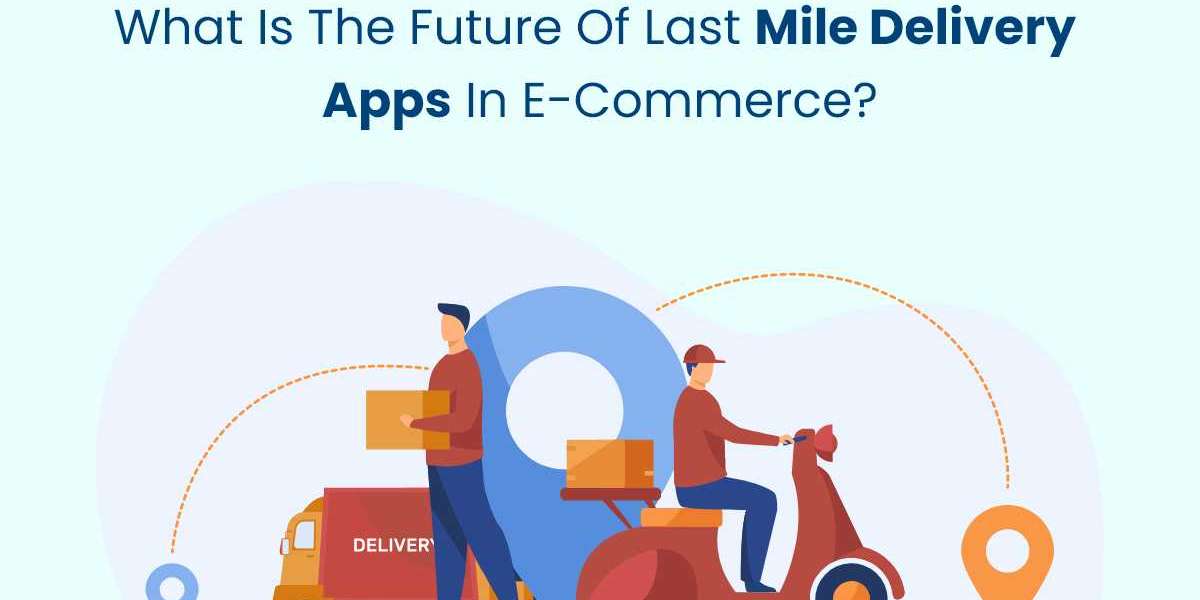As e-commerce continues to grow at an unprecedented pace, the last mile delivery segment is evolving rapidly. This final leg of the supply chain, which involves transporting goods from a distribution center to the customer’s doorstep, has become a focal point for enhancing efficiency and customer satisfaction. The future of last mile delivery app is set to be shaped by advancements in technology, shifting consumer expectations, and emerging trends. This article explores the key factors that will define the future of last mile delivery apps in e-commerce.
1. Integration of Advanced Technologies
The future of last mile delivery apps will be heavily influenced by the integration of advanced technologies. Artificial Intelligence (AI) and Machine Learning (ML) are poised to play significant roles in optimizing delivery routes, predicting demand, and improving overall efficiency. AI-driven route optimization algorithms can analyze vast amounts of data, including traffic patterns, weather conditions, and delivery windows, to generate the most efficient delivery routes. This not only reduces delivery times but also lowers operational costs.
Additionally, the use of autonomous vehicles and drones is expected to revolutionize last mile delivery. Autonomous delivery vehicles can operate around the clock without human intervention, potentially reducing labor costs and increasing delivery speed. Similarly, drones offer the promise of rapid, efficient deliveries, especially in urban areas with heavy traffic. While regulatory and logistical challenges remain, the integration of these technologies will likely become more prevalent in the future.
2. Rise of Hyperlocal Delivery Solutions
Hyperlocal delivery solutions are gaining traction as e-commerce businesses strive to meet the demand for faster and more flexible delivery options. Hyperlocal delivery focuses on serving customers within a specific geographic area, often using local couriers or delivery personnel. This approach allows for quicker delivery times, often within a few hours or even minutes.
Last mile delivery apps will increasingly incorporate features that support hyperlocal delivery, such as partnerships with local couriers or crowdsourced delivery networks. These solutions enable businesses to offer same-day or even on-demand delivery services, enhancing customer satisfaction and competitiveness. Additionally, integrating local delivery solutions can help businesses manage peak periods more effectively and reduce delivery costs.
3. Enhanced Customer Experience through Personalization
Customer experience will continue to be a major focus for last mile delivery apps. Personalization features will become more sophisticated, allowing businesses to tailor delivery experiences to individual customer preferences. This includes offering customizable delivery time slots, providing real-time updates and notifications, and enabling easy rescheduling of deliveries.
Last mile delivery apps will also leverage data analytics to offer personalized delivery options based on customer behavior and preferences. For example, apps might suggest optimal delivery times based on previous orders or provide recommendations for delivery locations based on customer feedback. Enhanced personalization will help businesses build stronger relationships with customers and increase loyalty.
4. Emphasis on Sustainability and Eco-Friendly Practices
Sustainability is becoming an increasingly important consideration in last mile delivery. As environmental concerns grow, both consumers and businesses are seeking more eco-friendly delivery options. The future of last mile delivery apps will likely see a greater emphasis on sustainable practices, such as using electric or hybrid vehicles, optimizing delivery routes to reduce fuel consumption, and implementing eco-friendly packaging.
Apps will incorporate features that support sustainability goals, such as tracking the carbon footprint of deliveries and offering customers the option to choose green delivery options. By aligning with sustainability trends, businesses can enhance their brand image, attract environmentally conscious consumers, and contribute to broader environmental goals.
5. Integration with Smart City Infrastructure
The integration of last mile delivery apps with smart city infrastructure will play a crucial role in the future of urban logistics. Smart city technologies, such as intelligent traffic management systems and real-time data sharing, can help optimize delivery routes and reduce congestion.
Last mile delivery apps will increasingly interact with smart city infrastructure to provide real-time updates on traffic conditions, parking availability, and other relevant information. This integration will enable more efficient delivery operations and improve overall service quality. Additionally, collaboration with local governments and city planners will be essential to address challenges related to urban delivery and ensure that last mile delivery solutions align with city infrastructure.
6. Expansion of Delivery Options and Flexibility
The future of last mile app will see an expansion of delivery options and increased flexibility. Businesses will offer a broader range of delivery choices, including contactless delivery, locker pickups, and flexible time slots. These options will cater to diverse customer needs and preferences, providing greater convenience and control over the delivery process.
Apps will incorporate features that allow customers to easily select and manage their preferred delivery options, such as choosing between home delivery or pickup points, and adjusting delivery times based on their schedules. This flexibility will enhance the overall customer experience and improve satisfaction.
Conclusion
The future of last mile delivery apps in e-commerce is set to be shaped by advancements in technology, the rise of hyperlocal solutions, enhanced personalization, sustainability efforts, smart city integration, and expanded delivery options. As businesses and consumers continue to seek faster, more efficient, and eco-friendly delivery solutions, last mile delivery apps will play a critical role in meeting these demands. By staying ahead of emerging trends and embracing innovative technologies, businesses can optimize their last mile delivery operations, enhance customer satisfaction, and maintain a competitive edge in the ever-evolving e-commerce landscape.







